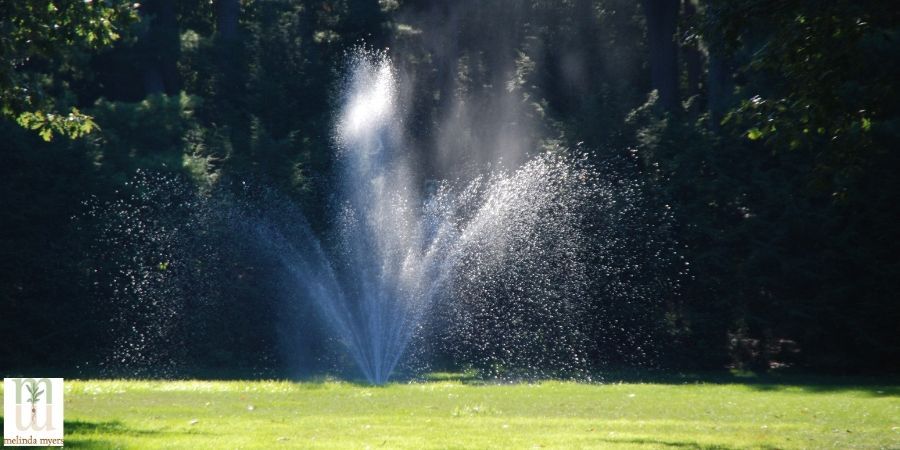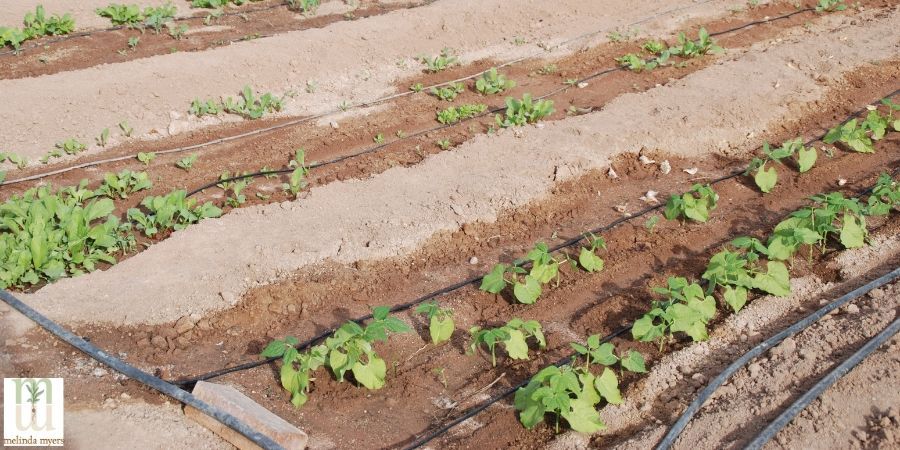Watering Do’s and Don’ts in the Lawn and Garden
- horticulturist and gardening expertJuly 13, 2019
It is difficult to think about watering when much of the country is experiencing record rainfall. Many farmers have been unable to plant their crops, landscape professionals are behind on installations and renovations and every gardener I meet has a complaint about the wet soil, rampant weed growth and root rot.
But as gardeners we know that the wet weather can give way to hot droughty conditions. And proper watering is a critical part of successful gardening. So let’s take a look at the do’s and don’t to help you keep your containers, in-ground gardens and lawn performing their best.

LAWN & GARDEN WATERING DO’S
- Check the top few inches of soil before turning on the hose
- The top 4 to 6 inches of soil should be crumbly but moist before watering most established plants
- Allow soil to go a bit drier for those plants that like it a bit drier
- Keep soil slightly moist throughout the root zone when establishing new annual and perennial flowers and vegetables
- Check container gardens daily and water thoroughly as needed
- The soil in smaller containers dries out more quickly and those smaller pots need more frequent watering
- The more plants, and more established the plants, the more quickly the soil will dry so adjust your watering frequency accordingly
- If you water your lawn during dry periods, water thoroughly and only when needed. Lawns need to be watered when the grass blades turn a gray-green. Or if your footprints remain after walking across the lawn it is time to water. Both are clues the grass needs to be watered.
- Most lawns need one inch of water each week
- Apply in one application for lawns growing in heavy soil
- Make 2 applications of half an inch for lawns in fast draining soil
- Adjust the amount applied based on rainfall for the week
- Water early in the day
- Waste less water lost to evaporation
- Take advantage of the morning dew by washing it into the soil
- Reduces the risk of disease by avoiding wet leaves at night
- Fertilize with Milorganite
- This slow release fertilizer promotes slow steady growth above and below ground that is more drought tolerant
- The low nitrogen fertilizer will not burn plants even when the weather turns hot and dry
- Adjust your watering schedule based on rainfall, air temperature, wind, individual plant needs and the soil
- Higher temperatures mean the soil dries out faster so you will need to water more often
- Windy conditions cause plants to lose more water from their leaves and may need more frequent watering
- Clay soils hold moisture longer so you water thoroughly and less often
- Fast draining soils dry out quickly so you need to water thoroughly but more frequently
- Drought tolerant plants once established need less frequent irrigation
- Apply water directly to the soil whenever possible
- Drip irrigation, soaker hoses and watering wands allow you to apply water right to the soil where it is needed
- Less water is lost to evaporation
- Less risk of foliar diseases

LAWN & GARDEN WATERING DON’T’S
- Water on a calendar basis. Let your plants be your guide
- The longer you garden the easier it is to see when a plant needs watering
- Leaves are less firm and turn slightly off color
- The longer you garden the easier it is to see when a plant needs watering
- Don’t be fooled by curled leaves during mid day
- Plants often curl their leaves to conserve moisture and unfold them as temperatures drop and sunlight decreases
- Check the soil before you begin watering
- Water in the evening
- Wet leaves at night increase the risk of disease
- Apply small amounts of water to in-ground plantings every day
- This encourages shallow roots that are more susceptible to drought stress
- One missed day can result in stressed and wilted plants
- Have your irrigation system zoned to water all plants the same amount each week
- New plantings, established trees, lawns, perennials and annual flowers and vegetables require different amounts of water.
- Set your irrigation timer by the calendar
- Adjust your timing and application rate based on weekly rainfall and plant needs

